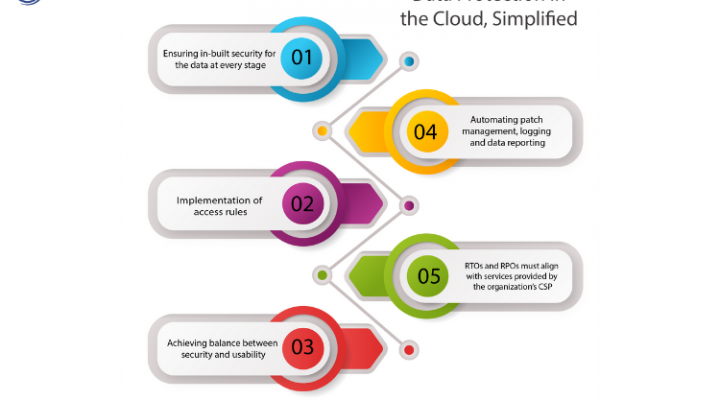
| Author: Ashish Kumar | Published: 09-Apr-2022 |
Risk management and IT are inextricably intertwined. Organizations are now more aware than ever of the importance of data protection. Consider that, according to Gartner, spends on risk management and information technology solutions globally grew by 12.4% in 2021. Worldwide enterprises are putting more effort is going into discovering, classifying, and assessing sensitive data and personally identifiable information (PII) in order to gain an updated inventory, either in the cloud or on-premises.
Industry experts estimate that by 2024, more than 80% or organizations across the world will need data protection. Which means organizations need to start now to set up regulatory programs, manage large volumes of data, its complexity and numbers of people accessing it, not to mention manage evolving regulations.
Investment in modern data protection strategies is not longer a luxury. But before investing in these strategies, it is imperative also to evaluate existing capabilities, identify potential areas for improvement to drive value, and planning compliance.
The Need for Data Protection
Burgeoning cloud adoption across industry sectors has led to ever increasing volumes and diversity of data being generated. Handling this data and keeping it safe in the face of cyberattacks is daunting. Increasingly we see sophisticated cyber attacks that lead of largescale breaches and compromised data security, which is often fatal of businesses. But, while it is tempting to dismiss cyber attacks as a threat to large organizations, the numbers tell a different tale: 50% of data breaches overall are suffered by small and medium-sized enterprises. Leniency against security risks is the soft underbelly of most organizations; it leaves infrastructure vulnerable to downtime, data loss and financial losses, not to mention regulatory penalties.
What Should Organizations Do?
It is critical to create resilient data protection policies that communicate expectations clearly and set out remediation actions should the threats occur
Organizations need to educate and train not just their their IT security but entire staff about cybersecurity, phishing, and password protection best practices
Other measures include:
Backing up data so as to avoid data loss in the event of any issue, be it a breach, natural disaster or system failure
Data encryption is another line of defence that contains damage from breaches
Reporting and monitoring tools should be leveraged to ensure that implemented data security policies are effective
In the light of growing cloud adoption, it is only natural that the cloud should be the first preference for data protection. And it will only increase, as organizations globally move their back up preferences from on-premises solutions to cloud backup services. But cloud solutions cannot—or rather, should not—be implemented off the shelf; they need to be adapted to suit requirements if they are to provide an effective cloud data protection strategy.
Key Best Practices for Data Protection In The Cloud:
Securing Infrastructure in the Cloud
When convenience gains priority—as it often does under pressure to maintain business continuity and competitiveness—security measures get postponed leaving the data vulnerable to attacks. These delays and oversights are an invitation to breaches for cyber criminals. It is thus critical for organizations to secure their infrastructure as the first step towards leveraging the many benefits that the cloud offers.
Best Practices
In a Nutshell
There is an urgent need for organisations to make informed decisions about their data and how it is best protected without compromising operational efficiency and business continuity. Understanding the need to protect data and following best practices for securing cloud infrastructure lets organisations generate the maximum value from their data without leaving them vulnerable to cyber attacks.
As an independent CSP, Advanced Partner to AWS and Partner to Azure & GCP, with more than a decade’s worth of cross-industry experience, Teleglobal A Cloud Consulting Services Provider can help you assess your needs and implement the best strategy to protect your data and infrastructure in the cloud, quickly and cost effectively. To learn how, contact us now.
 close
close

Hi there! At TeleGlobal, we turn your cloud vision into AI-accelerated reality. What challenge can we help you solve?
Powered by ![]() teleBot
teleBot